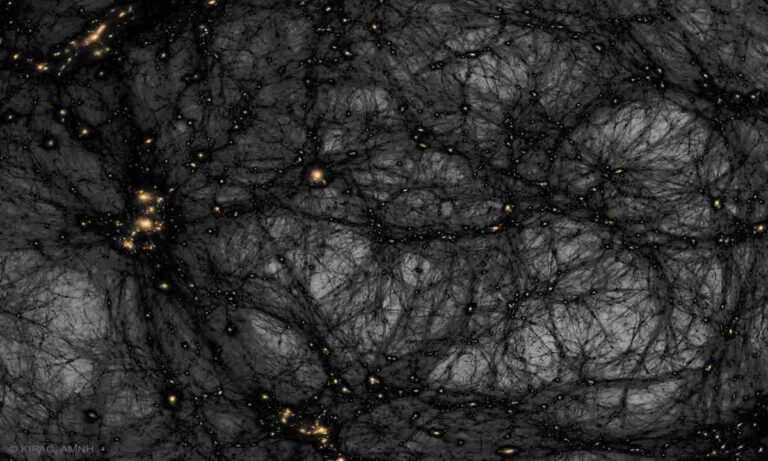Scientists Edge Closer to Solving Dark Matter Mystery with Advanced Quantum Detectors
Perhaps, one of the most captivating mysteries in the whole domain of science could be on the precipice of a solution. According to astronomers, about 80% of the matter in the universe cannot be seen by the human eye. Dark matter is probably moving through us at trillions of particles every second, if not more. While we cannot directly make out dark matter, we can see how it affects objects through its gravity.
Many tries have been made, many experiments have been conducted, but it has still not been detected. A research group at Lancaster University, Oxford University, and Royal Holloway, University of London is building the most sophisticated dark matter detectors using advanced quantum technologies. Their multimedia public display is titled “A Quantum View of the Invisible Universe” and will be featured at the Royal Society’s Summer Science Exhibition from July 2 to July 7, 2024. Further, their related research includes papers published in the Journal of Low Temperature Physics.
The team of researchers consists of Dr. Michael Thompson, Professor Edward Laird, Dr. Dmitry Zmeev, and Dr. Samuli Autti from Lancaster, Professor Jocelyn Monroe from Oxford, and Professor Andrew Casey from RHUL and is at the forefront of this innovative research.
EPSRC Fellow Dr. Autti remarked, “What we are doing is creating the most sensitive detectors to date by using quantum technologies at ultra-low temperatures Our goal is to observe this enigmatic matter in the lab and solve one of the biggest questions in science.
It is possible to have indirect observational evidence for the standard density of dark matter in the galaxy while little is known about the self-mass of the particles and their potential interaction with atomic particles. Particle physics theory proposes two probable dark matter candidates: new particles with interactions so weak that they have not been observed, and very-low-mass particles with wave-like properties called axions. The team is building two studies, one for each candidate.
Of the two possible candidates, new particles with ultra-weak interactions might be detected by studying their interactions with normal matter. However, whether these collisions can be detected in an experiment depends on the mass of the dark matter being searched for. The vast majority of today’s searches could identify particles of dark matter that would weigh between five and 1,000 times as much as a hydrogen atom, but the existence of much lighter dark matter candidates may not have been realized. The QUEST-DMC team is currently working towards the goal of attaining world class sensitivity to collisions with dark matter candidates with masses between 0. 01 to a few hydrogen atoms. To achieve this, the detector is made of superfluid helium-3, in a macroscopic quantum state and provided with superconducting quantum amplifiers.
Together with the two quantum technologies, the faint signals coming from dark matter collisions can be easily detected. On the other hand, if dark matter is made up of axions, they are extremely small—over a billion times lighter than a hydrogen atom—yet, there are many of them. While scientists cannot directly observe collisions with axions, they can look for another sign: an electrical pulse created when axions disintegrate in a magnetic field.
The QSHS team is currently planning to build a new type of quantum amplifier aimed at searching for an axion signal. This amplifier needs a most delicate amplifier that works at the best level achievable by quantum mechanics. This year’s exhibition will give the visitors the chance to discover the unknown via educational and entertaining exhibits for all ages. These exhibits will illustrate how dark matter is deduced from observing galaxies – for instance, there would be a gyroscope-in-a-box that appears to levitate due to unidentified angular momentum.
Also, there will be glass marbles that will be seemingly invisible in the liquid but can be made visible through some funny experimentation. A light up dilution refrigerator will explain how the team gets to very low temperatures while a model dark particle collision detector will show how the universe will respond if dark matter behaves like normal matter. They will also be able to explore for dark matter using a model axion detector by tuning the frequency of a radio receiver. Also, they are capable of designing their own parametric amplifier using a pendulum.
Cosmologist Carlos Frenk, Fellow of the Royal Society and Chair of the Public Engagement Committee said that science is fundamental to understanding the world we live in. He invited all, young and old, to come with an open mind and interest in order to appreciate scientific accomplishments that positively impact the lives of all.
Reference: S. Autti et al, QUEST-DMC: Background Modelling and Resulting Heat Deposit for a Superfluid Helium-3 Bolometer, Journal of Low Temperature Physics (2024). DOI: 10.1007/s10909-024-03142-w
Do not forget to share your opinion with us to provide you with the best posts !




0 Comments